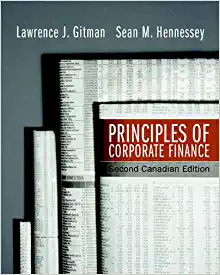


Question 1: Every two years, Warrior Lacrosse develops a new lacrosse stick design. Over the past year, the company has invested $25,000 in their latest stick, the Warrior-X. In addition, the rm has hired a consultant, for $10,000 to determine whether there will be a market for the stick. The consultant has advised the rm to go ahead and start production. Warrior expects to the new equipment needed to mold the stick to cost $500,000. The equipment will be depreciated using 3-year MACRS. In three years, Warrior plans to sell the equipment for $25,000. The company expects to produce sell the new stick line for 3 years. They predict that they can sell 300,000 sticks for $200 each in each of the three years. During the rst year, they company expects sales from its current model, Warrior- Cradle to decline by $100,000. After that, the Warrior Cradle will no longer be produced. The company predicts that operating costs for the Warrior-X will be 25% of sales. If the company's tax rate is .21 and their required return is .09, should the stick be produced? Please show the project's NPV, IR and Protability Index 3- year MA CRS Depreciation (I) .3333 (2) .4444 (3) .1482 (4) .0742 Please base your answers to questions 2-6 on the information, below, for Projects A and B A B AWNO -90000 -2500 25000 1500 50000 1500 50000 1500 50000 1500 NPV PROFILE NPV's for k A NPV's for B 0.05 $63,488.00 $2,818.93 0.075 $54,210.50 $2,523.99 0.08 $52,458.19 $2,468.19 0.1 $45,766.00 $2,254.80 0.125 $38,059.75 $2,008.46 0.15 $31,009.79 $1,782.47 IRRs 29% 47% Question 2 If the required return for both projects A and B is 8% and the projects are mutually exclusive, which project(s) should be selected? Questions 3-6 Continuing to assume that both project's A and B have required returns of 8%, find the projects' Payback period, discounted payback and profitability index.Question 7 Discuss the pros and cons of using the payback period and the IRR rule to determine profitability of a capital project. Question 8 Find the expected return and variance of the following probability distribution: P(i) (i) .3 -5% 4 3 w 10_Question 9 Use the two probability distributions below to answer this question 31; Ret! Why) Ret(Zee) .2 -5% 10 .6 8 5 .2 12 -20 Find the expected return and risk of a portfolio of securities Why and Zee if an investor invests $6000 in Why and $9000 in Zee. Question 10 Explain why a portfolio of the securities Why and Zee has a lower risk than either of the individual securities. Assume you have $20,000 to invest, and plan to divide it among 3 securities in the manner shown on the table below. Use the information on the table to answer questions 11 and 12. Stock Investment B A $5000 2.5 B $4000 1.0 C $1 1,000 0.5 Question 11 Compute the portfolio's [3. Question 12 If the risk-free interest rate is 2%, and the market risk premium is 5%, compute the Expected Return for your portfolio. Also identify your portfolio's risk premium and the return to risk for the portfolio. Question 13 In class, we discussed the risk-retum tradeoff. Apply the risk-retum tradeoff to bonds, preferred stock and common stock. Explain why it makes sense that bonds are the lowest risk/return securities corporations use to raise capital, and why, on the other hand, common stock is the highest. Don't forget to discuss preferred stock in your answer. Question 14 Find the WACC for the following company: Debt: 25,000, 7% coupon bonds outstanding, 15 years to maturity, selling for 92% of par. The bonds have $1000 par and make semi-annual payments. Common Stock: 450,000 shares outstanding selling for $75 per share, the beta is 1.3. The expected return on the market is 13%, the risk-free interest rate is 5%. Preferred Stock: 10,000 shares outstanding, selling for 100 per share, the annual dividend is $12. The company's tax rate is 21%














